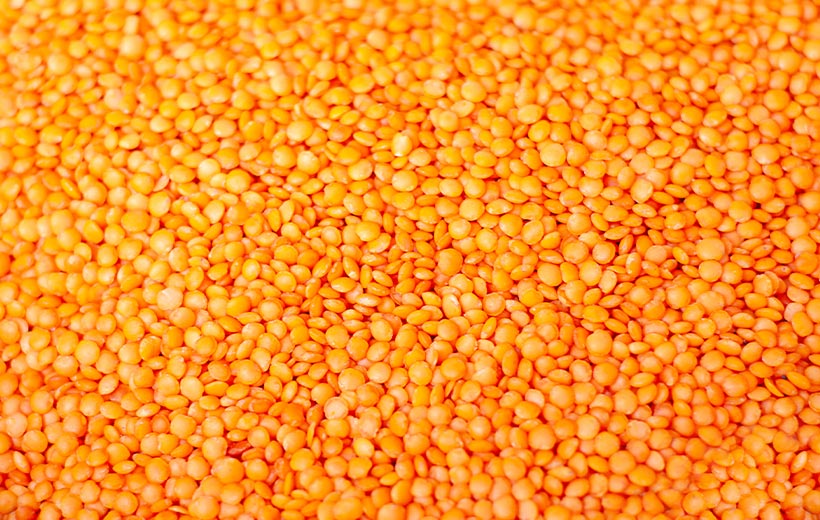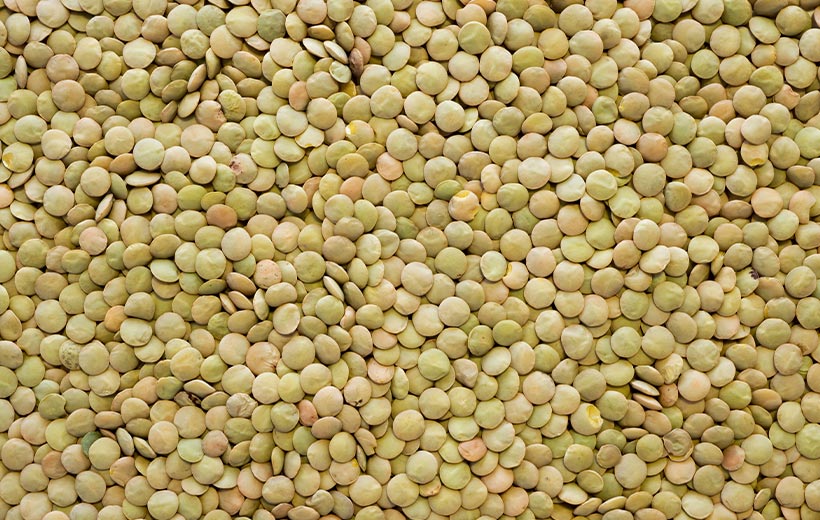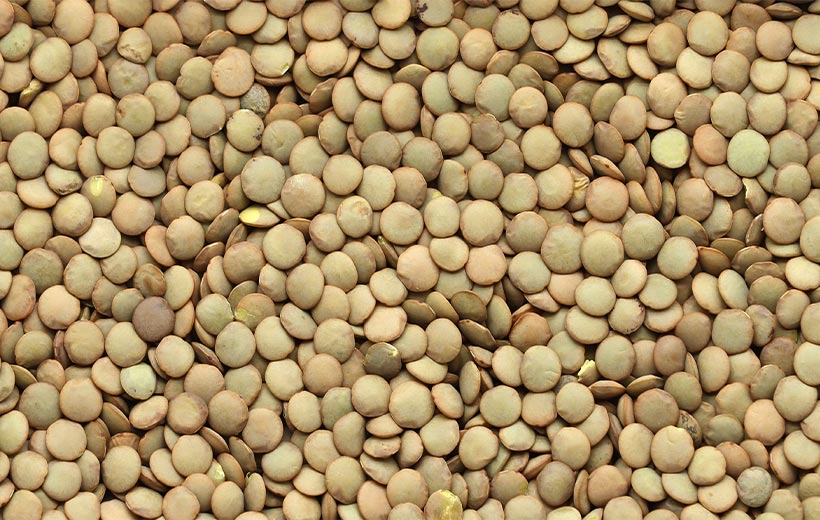What are the wholesale prices of lentils in Canada today?
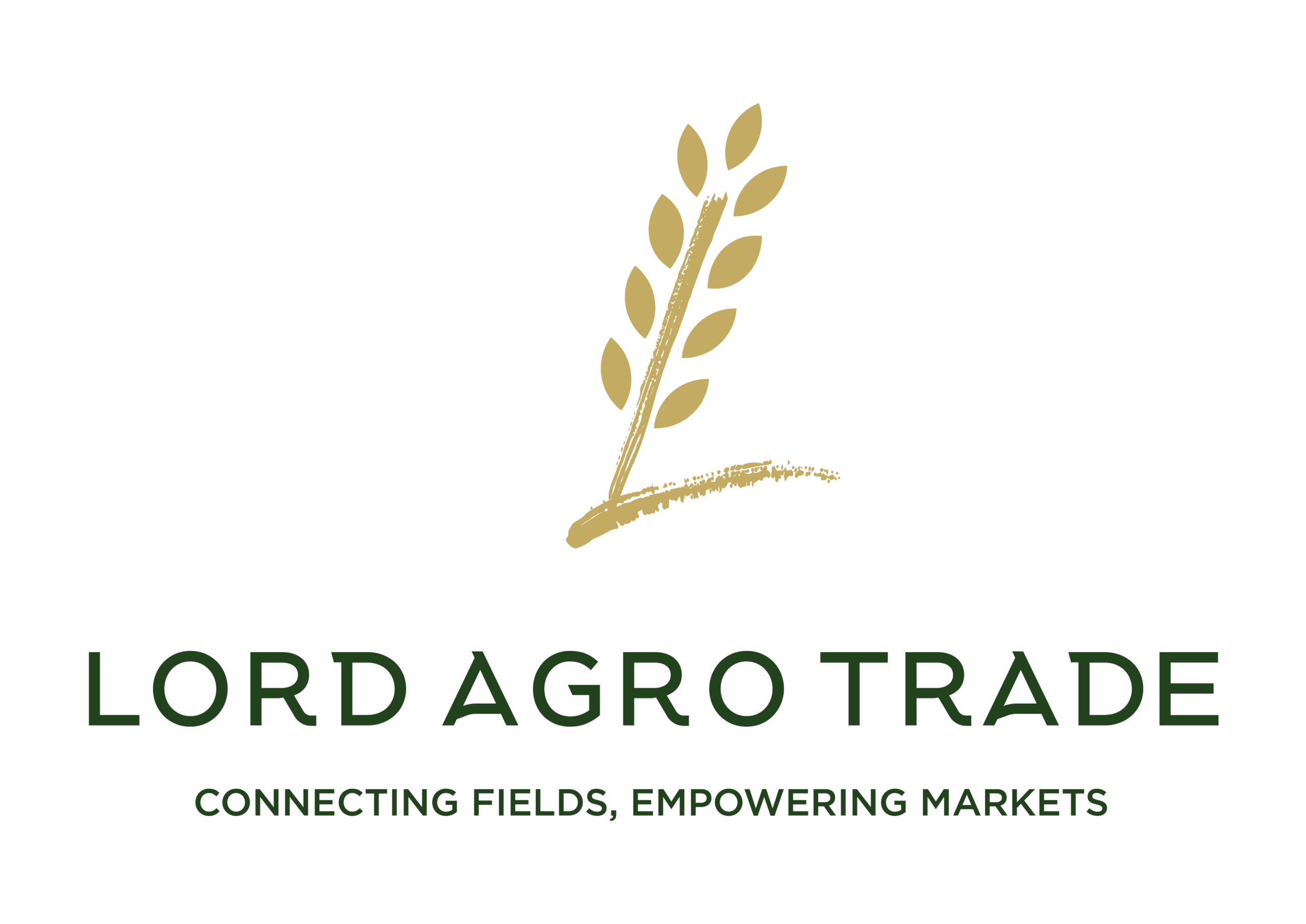
Payment Terms: T/T (Telegraphic Transfer) or 100% at sight L/C, payable to our account at one of the top 3 Canadian banks & Dubai banks
Product Type | Whole Red Lentils (Crimson) or Masoor |
Place of Origin | Canada |
HS Code | 071340 |
Style | Dried |
Packaging | PPW Plain 45/50 Kg Bags |
Price per tonne | 780 – 810 USD |
Port | CFR Jebel Ali / Mersin |
MOQ | 5 FCL |
POL | Vancouver, CA |
Shipment Period | Jan/Feb |
Update Date | 01 Dec 2025 |
Communication with experts

Product Type | Large Green Lentils (Laird No1) |
Place of Origin | Canada |
HS Code | 071340 |
Style | Dried |
Packaging | PPW Plain 45/50 Kg Bags |
Price per tonne | USD 900 ~ USD 920 |
Port | CFR Jebel Ali / Mersin |
Shipment Period | Jan/Feb |
MOQ | 5 FCL |
POL | Vancouver, CA |
Update Date | 01 Dec 2025 |
Product Type | Small Green Lentils (Eston) |
Place of Origin | Canada |
HS Code | 071340 |
Style | Dried |
Packaging | PPW Plain 45/50 Kg Bags |
Price per tonne | USD 800 ~ USD 840 |
Port | CFR Jebel Ali / Mersin |
Shipment Period | Jan/Feb |
MOQ | 5 FCL |
POL | Vancouver, CA |
Update Date | 01 Dec 2025 |
Product Type | Medium Green Lentils (Richlea) |
Place of Origin | Canada |
HS Code | 071340 |
Style | Dried |
Packaging | Poly Bag 45/50 kg |
Minimum Order | 5 container |
Price per tonne | Call to buy |
CFR Price / Per Ton | Jebel Ali / Mersin |
Shipment | Jan/Feb |
Port | Vancouver, CA |
Update Date | 01 Dec 2025 |
Product Type | Red split lentil or Masoor Dal |
Place of Origin | Canada |
HS Code | 071340 |
Style | Dried |
Packaging | Poly Bag 45/50 kg |
MOQ | 5 Containers |
Price per tonne | USD 885 ~ USD 910 |
Port | CFR Jebel Ali / Mersin |
Shipment | Jan/Feb |
Update Date | 01 Dec 2025 |
Lentil market trends
Lentils, which are a type of legume, are characterized by their pod-filled structure and lens-like seeds. Brown, green, red, and black are among the varieties, which have different shapes and thicknesses. Lentils are a great source of fiber, iron, and protein as well as vitamin B thus they are very important in healthy nutrition. They are usually used in soup, salad, and stew. Lentils strengthen digestion, heart health, blood sugar control, weight management, and immunity, and deliver prolonged energy while helping skin health.
Lentil is a good crop for the market due to the properties of sustainability, less water consumption, and the nitrogen enrichment approach of lentils, which support the market growth. Besides the lentil’s low prices and high nutritional value, there is also a demand for lentils due to their culinary diversity. Through the adoption of policies and subsidies, the government programs have been supporting lentil cultivation which is also contributing to the market’s growth. Additionally, investing in the supply chain and the introduction of agricultural technologies, such as better seeds and farming methods, are making lentils more available and [end of paragraph] hence, [end of previous sentence] making the market even stronger.
The effect of personal health and well-being on the price of lentils
The consumers’ growing interest in personal health and well-being is driving them to nutrient-dense foods such as lentils, which are high in protein, fiber, iron, and all the essential vitamins. They are lentils for the wealth of their assets for digestion, heart health, and blood sugar regulation. With issues like obesity and diabetes on the rise, lentils are now a regular addition to a healthy diet. Healthcare professionals’ help and media attention, in addition, promote lentils as one of the most nutritious and necessary components of a balanced diet, which reinforces their market demand.
Legume-based cooking recipes
The increasing use of lentils in different culinary traditions as well as modern cooking trends has pushed the lentil demand to a higher notch. This growing demand, which is attributed to the many cooking shows, workshops, and innovative recipes that highlight lentils’ versatility and nutritional value, directly influences lentil prices. In recent years, lentils have been used increasingly in the preparation of various meals, including fusion cuisines, which could also be responsible for the fluctuations and market prices rising in the future as their culinary applications spread worldwide.
High demand for legume-based diets
The shift to plant-based diets, including vegetarianism and veganism, has suddenly gained a lot of attention in recent years. People have these diets because they are concerned about animal rights, caring for the environment, and the benefits of lentil’s health. Lentils, which are a good source of plant-based protein, fit these dietary choices very well, providing the necessary amino acids that are often found in limited quantities in plant-based foods. Lentils that could be used to make meat substitutes that are edible and moreover, educational campaigns, are also part of the growing trend of lentils in contemporary diets.
wholesale lentil prices in Canada
Wholesale lentil prices in Canada are volatile as they are affected by multiple factors such as production levels, worldwide demand, weather, and logistics costs. The fact that Canada is a huge exporter means that its lentil market is quite dependent on foreign buyers from India, Turkey, and the United Arab Emirates. These types of policies can include the introduction of taxes and other trade regulations which will have a direct impact on the prices of Canadian lentils. Moreover, organically cultivated lentils are often sold at a high price, too, because of the growing trend of organic food products.
Production levels and product quality are the main aspects impacting the wholesale prices of such products. Weather events such as droughts or heavy rainfall can influence both the quantity and quality of the crops that are harvested. This can result in price changes. The rise in transportation and logistics costs, especially those due to fuel prices or supply chain disruptions, will also affect the final wholesale price. Global demand is also an important factor. For example, if there is a shortage of lentils in nations such as India, Canadian lentil prices may skyrocket. Additionally, fluctuations in the Canadian dollar exchange rate also impact the opportunities since exports are sold in various currencies.
As red lentils are not in demand in Asian markets, only the North American and European markets opt for green lentils.
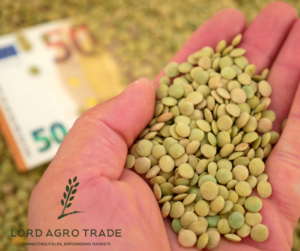
Lentil Price Per Ton in Canada | What Influences the Market?
Canada is time and again seen as the highest seller of lentils on the global scale, sending top-notch lentils to over 100 countries. In Canada, the price of a ton of lentils is a highly changeable number depending on the many global and national factors. Logical mind why does a section of the cost of this significant crop look like?
1. Canada’s Agricultural Strength
From the prairies of Saskatchewan to the world, these soil-rich and sunny lands are a heaven of some of the best lentils. These crops are blessed with good taste and health for people making them be the commonest ones around the globe. Such recognition helps sustain the demand from other countries, thus, leading to high competition among local producers.
2. Global Demand for Plant-Based Proteins
The growing number of customers who are moving to plant-based diets prefer lentils for high protein content and because they can be used in many ways. Countries like India, Turkey, and the Middle East are highly dependent on the Canadian lentils which in turn is causing the lentil price per ton in Canada to be higher and higher.
3. Weather and Climate Impacts
Environment conditions are very important for production. Weather is one of the most crucial determinants of the quality and yield of crops in the sense that droughts or excessive rains can damage them, hence the season price differences. Therefore, climate pattern monitoring is the principal means of market trend perceiving.
4. Economic and Logistic Factors
The costs of vehicle transportation, fuel prices, and currency conversion also determine the lentil price per ton in Canada. Basically, the exchange rates also as a determinant of Canada stocks’ pricing since a larger portion of a country’s production is being exported, and globally shipping and currency trends may reflect on pricing.
5. Why Invest in Canadian Lentils?
The farmers’ and traders’ people of Canada lentils have a particular benefit. Because they are of good quality, they are in high demand because of the diverse ways that they can be utilized in food industries. Thus, they serve as a commodity of identifying quality. When prices increase or fall, proper times for trading can be found, if you properly keep tabs on price trends.
6. The Future of Lentil Pricing
With the expanding production of green (non-harming the environment) farming and the food made from plants the need for lentils is going to grow. Nevertheless, climate change factors alongside ambiguous trade terms might pose hindrances as well as chances.
The factors that affect the price of pulses and grains
Several factors influence the production and price of legumes. These include weather conditions, pests and diseases, government policies, the cost of agricultural inputs, and the supply and demand in domestic and foreign markets.
The most important factors affecting the price of legumes
Here are some key factors that impact the price of pulses:
Supply and Demand: The balance between supply and demand significantly affects pulse prices. For instance, if the supply of red lentils is low and the demand is high, the price usually increases, and vice versa. Factors like weather conditions, natural disasters, and changes in crop yield can affect supply.
Agricultural Land Conditions: The conditions of agricultural land, such as soil fertility, moisture, pH levels, proper ventilation, and irrigation quality, directly impact the growth and yield of legumes. Favorable land conditions can lead to better yields and lower prices.
Agricultural Technology: The use of advanced agricultural technology can increase yield and improve the quality of legumes. Higher production efficiency can reduce production costs and potentially lower prices.
Price Changes in Related Factors: The cost of other inputs used in legume production, such as fertilizer, pesticides, fuel, energy, and labor, can also affect prices.
How is the price of wholesale pulses calculated in the market?
Customers often want to know the daily price of legumes and grains to make purchases at the best rates. However, the wholesale price of all types of pulses can change due to various factors. In every market, especially in countries that produce their own beans or lentils, both foreign and domestic beans influence prices. Additional factors affecting wholesale pulse prices include:
- Currency fluctuations
- Imports and exports
- Supply and demand
- Cultivation and harvest conditions
- The type of pulses requested
- Purchase volume
Wholesalers of legumes consider all these parameters when pricing their products.
Factors affecting the price of lentils
Trade Policies
Such policies on international trade bring about an immediate effect on lentil prices. Tariffs, export, and import restrictions changes, and the trade agreements made between countries are the factors that greatly determine the pricing. For instance, if a major producer like Canada exports lentils to other countries but then suddenly has export restrictions, or if new tariffs are imposed, this could cause an increase in price in global markets. The trade agreements between the producing and consuming countries may, on the other hand, result in a decrease in the costs making the prices stable. Sanctions also are of great importance in this case. For instance, the sanctions on certain key producers or consumers could cause a disruption of the lentil trade flow making it hard to find lentils thereby increasing the prices. Similarly, the levying of heavy import tariffs on lentils from certain countries can result in the final product’s high cost, pushing the market prices. Moreover, domestic policies that support local production will, in turn, reflect on the prices. Some countries may decide to impose higher tariffs on imports which would then protect their farmers leading to a situation where the imports would be reduced and consequently higher local prices would be charged. On the other hand, the government giving subsidies and trade incentives to increase domestic production can ease market pressures and stabilize prices. In short, international relations and trade policies are the key factors in deciding lentil prices worldwide.
Weather Conditions
Weather conditions are the factor that is important for lentil production and prices. Lentils are very sensitive to climatic variances such as droughts, floods, and other types of disasters which can lead to a dramatic reduction in the yields and thus cause a rise in the price of the product. For example, a drought in a lentil-producing region will not be able to supply enough of the product, thus pushing the prices both in the domestic and the international markets.
Lightning is not just the only weather phenomenon affecting lentils, as another significant influence is El Niño, which may lead to major changes in climate on lentil-producing lands, either due to too much rain or very little rain. These phenomena usually create the situation of low yields and high price volatility. In some instances, lower yields may force countries to boost their imports, which will, in turn, boost prices through this channel.
Moreover, weather forecasts can also affect the choices of farmers. Should the weather conditions be unfavorable, farmers would rather cut the area on which lentils are planted thus the production will be low and the prices will be high. All in all, weather conditions are the main determinants of the supply, demand, and pricing dynamics of lentils.
How to Check the Price of Legumes
With the growing demand for accurate and up-to-date information on agricultural commodities, numerous websites now offer real-time, daily, and even annual price reports for various goods. One notable resource is the official website of Saskatchewan statistics, which provides comprehensive price reports for green and red lentils, particularly useful for pulses exporters and importers.
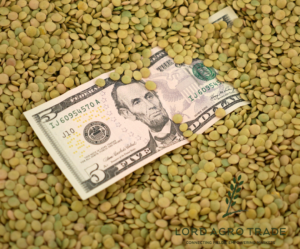
Example: Lentil Prices in Saskatchewan
According to the Government of Saskatchewan’s statistics, the prices for green and red lentils in the 2022-2023 crop year are as follows:
Green Lentil price
At the beginning of the 2022-23 crop year, weekly prices for all green lentils ranged from $34.00/cwt to $43.50/cwt.
By the end of the crop year, prices increased, ranging from $49.25/cwt to $57.25/cwt.
Red Lentil price
Red lentils started the crop year at $31.50/cwt.
Prices slightly increased to $32.00/cwt by the end of the crop year.
On average, the farmgate prices for all lentils in Saskatchewan saw a 14.3 percent increase from the previous crop year, 2021-22, to 2022-23.
Released: July, 2024
To know about updated prices of lentils please contact us on our Website, WhatsApp, or by Email.
Official Email: info@lordagrotrade.com
Frequently asked questions about the price of wholesale lentils.
Lentil prices are impacted by global supply and demand, weather conditions, trade policies, and production costs.
Prices can vary seasonally or due to changes in market conditions, such as harvest yields and trade restrictions.
Most suppliers accept bank transfers, credit cards, and possibly other methods depending on the agreement.
This varies by supplier and should be clarified when placing an order.

